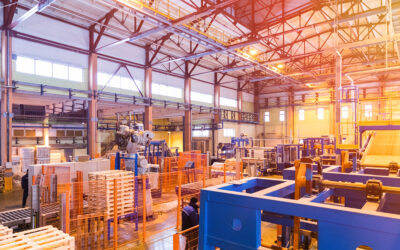Connected machines will be able to tell you they’re going to fail, before they fail. With predictive maintenance, significant reductions in unplanned downtime can save millions of pounds and keep customers happy.
According to published reports, in auto manufacturing, downtime can cost $1.3 million per hour. Analysts have found that downtime costs the average factory between 5 and 20 percent of its productive capacity, but more than three fourths of facilities are unable to accurately estimate their total downtime cost. Unscheduled maintenance and repairs on transportation assets like airliners, trains and trucks can send ripples throughout the supply chain.
With manufacturing machinery and other assets connected to the Industrial Internet of Things, predictive maintenance will soon replace scheduled maintenance based on mileage, time, or usage.
Instead, predictive maintenance uses trending data to predict or diagnose problems in a piece of equipment, using non-intrusive testing techniques to measure and compute equipment performance trends.
It eliminates the need to shut down for service on a periodic basis, enabling technicians to monitor things like vibration, heat and energy usage to understand what’s going on deep inside complex machinery. Vehicles can have their oil monitored, like taking a blood test, to measure the health of the engine’s circulatory systems. Hydraulic fluids and oils in manufacturing machines will also reveal operational performance and the spectre of oncoming failure.
In fact, Fortune Magazine reports that predictive maintenance will be one of the first killer applications for the Industrial Internet of Things. Machine learning technology that detects patterns in data collected from sensors embedded in medical devices, manufacturing equipment and consumer products, enables predictive maintenance strategies. Algorithms can determine when a specific component might be nearing failure. The data can also be mined for suggestions about future ways to improve product design.
Predictive Maintenance in Manufacturing
In manufacturing, Thingworx is designed to transform real-time machine data into actionable metrics to boost productivity by preventing or minimising unscheduled downtime. Routine time-based preventive maintenance can become a thing of the past because the assets are idled only when necessary.
In a large manufacturing facility, there may be thousands of active maintenance points across thousands of square feet. Valves, pumps, hydraulics and other devices require periodic inspection to detect the chance of imminent failure. Small sensors can be placed during scheduled maintenance and then monitored on an ongoing basis, providing many more data points all communicating via a centralized interface.
Predictive Maintenance in Field Operations
In field operations, connected machinery relays operational data to head off problems.
From its operations center, mining equipment company Joy Global monitors maintenance needs, environmental metrics and safety conditions deep underground. Mine operators can tell when a pump is running hotter than normal or when tunnel ceilings show signs of an imminent collapse.
Railroad operator CSX Transportation uses machine learning enabled solutions to analyze locomotive lube oil to maximize engine performance and hot bearing detection systems to reduce the chance for derailments.
In early pilot tests, agricultural machinery manufacturer CNH Industrial N.V. found that switching its internal paradigm from reactive to proactive reduced average downtime for combines, tractors, and harvesting machines by approximately 50 percent.
The company plans to leverage big data for additional value, for instance developing the machine intelligence to know that when the water temperature on a particular model rose to a certain level, 80 percent of the time the vehicle was experiencing a faulty radiator. With this knowledge, the parts supply chain could ensure the nearest dealer has the necessary parts for replacement.
Predictive Maintenance and Augmented Reality
That kind of big data based learning will feed the evolution of augmented-reality maintenance. Service techs can access repair and parts information on mobile devices, with information overlaid on visuals of the components on the screen. AR allows workers to visually access complex and hidden machine parts and assemblies without having to open up the machine casing.
For instance, Schneider Electric is empowering service techs with augmented reality to service its micro data center. The application provides information on site such as whether the battery may need to be replaced, and part numbers and service procedures, without having to carry bulky manuals or spend time looking up information on paper.
Mobile devices and wearables such as computer connected glasses tap into augmented reality applications to deliver access to vital information on an as-needed basis on the spot. Employees don’t have to return to the office to consult troubleshooting and repair manuals.
Portability extends the maintenance capabilities of the staff, and helps cover any skills gap with newly hired employees or contractors. Motorcycle manufacturer KTM expects AR to eliminate gaps between technician experience levels and provide a more consistent level of service.
With predictive maintenance, convenient scheduling of corrective maintenance prevents unexpected equipment failures. The key is delivering the right information at the right time in the right context to prevent failures.



